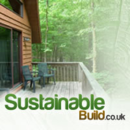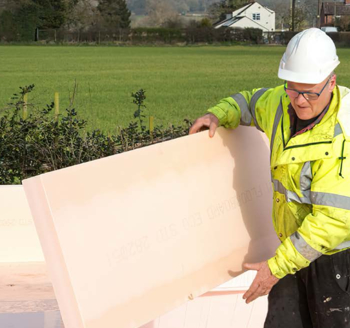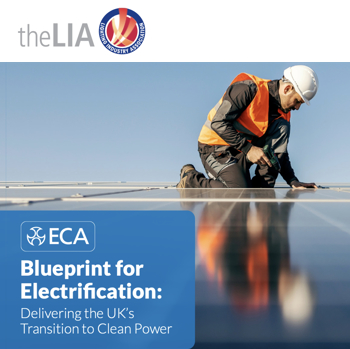Earth building
This article was originally published on Sustainable Build. It was written by Jennifer Grey.
Contents |
[edit] Introduction
Earth building is the practice of construction using unfired, untreated, raw earth. It has been successfully used around the world for over 11,000 years, and it is estimated that around half the world's population today live and work in earth buildings.
Earth is one of the most abundant, basic building materials. It is low technology, easily worked with simple tools, and yet can be used by anyone to construct walls, floors and roofs of advanced architectural design.
Earth buildings are highly durable, have good humidity regulation and sound insulation, and are non-toxic, non-allergenic and fireproof. They provide excellent thermal mass and insulation when built with thick walls, and when used with passive solar design.
Earth buildings have very low embodied energy, and low environmental impact, especially when the material is sourced on site.
As a building material and methodology, earth is the ultimate sustainable solution.
[edit] Types of earth building
The techniques and methods for earth construction vary with culture, climate and resources, but within the sustainable building movement they can be categorised as: cob, rammed earth, wattle-and-daub, light straw, earthbags, earth bricks, earthen floors, and earth plasters and finishes.
[edit] Cob building
The word cob means 'lump or rounded mass'.
Cobs are made from moist subsoil mixed with sand and un-chopped straw, and kneaded into stiff mud loaves that are then rammed together by hand to form a self-designed structure. The soil mixture should be approximately 1 to 2 parts clay (binder) to 1 part silt, 2 to 3 parts sand, and 3 to 4 parts gravel, and there should be around 3% straw to act as a strengthening binder and to prevent cracking.
Cob dries almost as hard as concrete and can be used for self-supporting, load-bearing walls. Thick walls are built (up to 6 ft wide) by working in layers, letting each one harden before adding the next layer. The wall is then plastered with clay or lime plasters, or left unfinished, but in wet climates an overhang or shelter might be necessary to protect an unfinished wall.
Building with cob is simple, cheap and requires few tools other than hands and imagination. It can be time-consuming, but there are many advantages to cob including its extreme durability, strength, fire-resistance, insulation properties and the ease with which it can be aesthetically shaped and sculpted.
For more information, see Cob building.
[edit] Rammed earth
Moist subsoil is layered into a temporary formwork (shuttering) and then rammed (tamped) for compaction by manual or mechanical means. The layers can be rammed continually until the wall is complete, with no need to wait for each layer to dry out. The walls are then allowed to dry naturally once the frame is removed. Rammed earth is stronger than cob, but more expensive because of the shuttering required.
For more, see Rammed earth.
[edit] Light earth or straw clay
A combination of cob and rammed earth, this involves coating loose straw or other fibrous material with a clay slip that is rammed tightly in layers into a timber frame. It is lighter than cob and has a higher insulation value, but is not as strong and must only be used as an infill with the timber frame.
The walls are allowed to dry before final plastering takes place. Light earth has also been used between rafters as roof insulation, and as insulation underneath earthen floors.
[edit] Wattle-and-daub
One of the oldest earth techniques, this involves weaving thin branches together (wattle) as a support for mud plaster (daub). It does not have the super-insulation properties of straw-bale or clay-straw, but provides good thermal mass.
For more information, see Daub.
[edit] Earthbags
These are soil-filled sacks that can be used to create walls and dome structures. This technique is still being explored, but seems to offer a quick and easy method for natural building, and may be especially suitable for temporary or disaster relief housing.
Moist soil is put into a burlap sack or plastic bag, stacked into place on a wall, and then compressed using a simple hand tool. Earthbags are increasingly being used as foundations for cob and straw bale houses.
[edit] Earth bricks
These are made from an earth and straw mix, similar to cob, placed into moulds to form bricks or blocks, and then dried out in the sun. The most popular type is adobe brick. Normal bricklaying techniques are used, using an earth or lime mortar. Earth bricks have load-bearing structural properties but provide poor insulation.
[edit] Earthen floors
This involves pouring one or more layers of an earth mixture over a substrate of gravel, pumice or sand. The site needs to be carefully prepared first to ensure drainage and low moisture.
Hardening agents are sometimes added such as blood, manure or lime. When the floor is completely dry, it is sealed with successive applications of linseed oil and turpentine, and waxed for protection.
[edit] Earth plasters and finishes
These are made from clay slips or lime and are becoming increasingly popular. They are non-toxic, and allow walls to breathe, so that any moisture trapped inside the walls can evaporate out.
[edit] Related articles on Designing Buildings
- Adobe.
- Architecture of Christiania.
- Arup and Better Shelter at the Working Together For Disaster Relief conference.
- Biomass.
- Clay.
- Cob building.
- Construction materials.
- Do green buildings pay?
- Earth plaster.
- Earthen construction.
- Earthship.
- Hemp lime construction: A guide to building with hemp lime composites.
- Hempcrete.
- Mud brick in Iran.
- Practical Building Conservation: Earth, Brick and Terracotta.
- Rammed earth.
- Recyclable construction materials.
- Retrofit.
- Rubble trench foundation.
- Sustainable development.
- Sustainable materials.
- Terracotta.
- Unfired clay masonry: An introduction to low-impact building materials.
- Vernacular earthen architecture.
- Wattle and daub.
- Ziggurat.
Featured articles and news
The UK's Modern Industrial Strategy: A 10 year plan
Previous consultation criticism, current key elements and general support with some persisting reservations.
Building Safety Regulator reforms
New roles, new staff and a new fast track service pave the way for a single construction regulator.
Architectural Technologist CPDs and Communications
CIAT CPD… and how you can do it!
Cooling centres and cool spaces
Managing extreme heat in cities by directing the public to places for heat stress relief and water sources.
Winter gardens: A brief history and warm variations
Extending the season with glass in different forms and terms.
Restoring Great Yarmouth's Winter Gardens
Transforming one of the least sustainable constructions imaginable.
Construction Skills Mission Board launch sector drive
Newly formed government and industry collaboration set strategy for recruiting an additional 100,000 construction workers a year.
New Architects Code comes into effect in September 2025
ARB Architects Code of Conduct and Practice available with ongoing consultation regarding guidance.
Welsh Skills Body (Medr) launches ambitious plan
The new skills body brings together funding and regulation of tertiary education and research for the devolved nation.
Paul Gandy FCIOB announced as next CIOB President
Former Tilbury Douglas CEO takes helm.
UK Infrastructure: A 10 Year Strategy. In brief with reactions
With the National Infrastructure and Service Transformation Authority (NISTA).
Ebenezer Howard: inventor of the garden city. Book review.
The Grenfell Tower fire, eight years on
A time to pause and reflect as Dubai tower block fire reported just before anniversary.
Airtightness Topic Guide BSRIA TG 27/2025
Explaining the basics of airtightness, what it is, why it's important, when it's required and how it's carried out.
Construction contract awards hit lowest point of 2025
Plummeting for second consecutive month, intensifying concerns for housing and infrastructure goals.
Understanding Mental Health in the Built Environment 2025
Examining the state of mental health in construction, shedding light on levels of stress, anxiety and depression.
The benefits of engaging with insulation manufacturers
When considering ground floor constructions.
Lighting Industry endorses Blueprint for Electrification
The Lighting Industry Association fully supports the ECA Blueprint as a timely, urgent call to action.
























